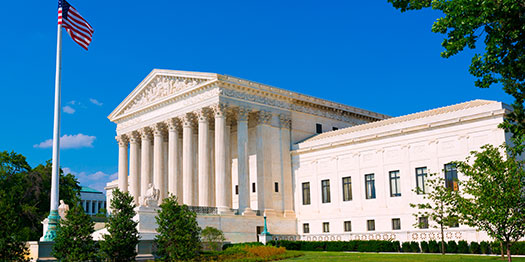This essay first appeared in the May 31, 2024 Epoch Times.
I’d like to think the Supreme Court’s May 16 “consumer finance” decision will shatter some myths. But I’m not holding my breath.
One such myth is that the court has a 6-3 conservative majority. Another is that we can restore popular control over the runaway federal government merely by electing good candidates, selecting good judges, and litigating good cases.
I’ll return to the myths shortly. First, let’s examine the May 16 decision.
The CFPB Monstrosity
The name of the case was Consumer Financial Protection Bureau v. Community Financial Services. It challenged part of the Dodd-Frank Wall Street Reform and Consumer Protection Act (“Dodd-Frank”), passed in 2010.
The bill that created Dodd-Frank exemplifies how the federal government works today. It consumed over 840 pages, stringing together many different subjects, so members of Congress could not vote on them separately.
It was advertised as a response to a financial crisis. One of several reasons for the crisis was an abuse of federal power.* But the response of Dodd-Frank was to increase federal power. Much of that increase came at the expense of the sphere the Constitution reserves to the states.
Dodd-Frank created more federal agencies. The one at issue in the recent Supreme Court case was the Bureau of Consumer Financial Protection (usually abbreviated “CFPB”). The CFPB received sweeping authority to regulate consumer finance, and by the exercise of that authority, the ability to influence policy in other areas. Right now the CFPB is trying to force financial institutions to lend to illegal immigrants. (Yes, you read that correctly.)
Dodd-Frank further granted the CFPB, in Justice Clarence Thomas’s words, “rulemaking, enforcement, and adjudicatory authority”—that is, Dodd-Frank combined legislative, executive, and judicial powers in one agency. This is the very situation that Baron Montesquieu, one of the Founders’ favorite scholars, decried as “the end of everything”—the ultimate political disaster.
The authors of Dodd-Frank designed the CFPB to last forever, no matter what voters or future elected officials might think. (The same Congress also tried to restrict the repealability of the Affordable Care Act—“Obamacare.”) The law specified that CFPB’s director would serve a term longer than the president. The president—although he is supposed to control the executive branch—was barred from removing the director except for narrow reasons. To prevent Congress from using the appropriations process to restrict or abolish the agency, Dodd-Frank awarded the CFPB permanent funding from the Federal Reserve System.
The authors of Dodd-Frank knew that permanent funding might violate the Constitution’s Appropriations Clause, so they tried to rewrite constitutional definitions. The law stated that “[f]unds obtained by or transferred to the [CFPB] shall not be construed to be Government funds or appropriated monies.”
The Challenge to the CFPB
In 2020, the Supreme Court ruled unconstitutional the single portion of Dodd-Frank insulating the agency’s director from presidential control. In the May 16 case, the justices faced another single issue: Did the CFPB funding scheme violate the Constitution’s Appropriations Clause (Article I, Section 9, Clause 7)?
The Appropriations Clause reads, “No Money shall be drawn from the Treasury, but in Consequence of Appropriations made by Law.” Those challenging the law argued that the CFPB’s funding scheme did not rely on legal appropriations because it received funding permanently rather than periodically and from the Federal Reserve System rather than from Congress.
The challengers acknowledged that some other agencies were funded permanently. But they pointed out that most of those agencies relied on fees imposed on those they served. Moreover, other agencies were required to return surpluses to the treasury. The CFPB was not subject to those constraints. As a result, it had accumulated a massive slush fund that further protected it from popular and congressional scrutiny.
The combination of these features was unprecedented.
Justice Thomas’s Opinion for the Court
Justice Thomas wrote the opinion for the court. It upheld the constitutionality of the CFPB’s funding scheme. This justice whom the media brand as “conservative” reached a very liberal result. And of the five other justices the media call “conservative,” three reached the same result.
To be sure, if you read between the lines of Justice Thomas’s opinion, you might deduce that Dodd-Frank is not exactly his favorite piece of legislation. But it isn’t his job to declare laws good or bad. His job is to determine whether the CFPB’s funding scheme is an “Appropriation[] made by Law” as the Constitution uses that phrase.
As he generally does when he can, Justice Thomas answered that question by examining the Constitution’s text and how it was understood by those who adopted it. This is commonly called “originalism,” but it is the same method courts and lawyers routinely apply to most legal documents.
Fortunately, there is a lot of evidence on what the Founders meant by the word “Appropriation.” Justice Thomas began by discussing the definitions in several Founding-Era dictionaries. He also examined practices in the British Parliament and in Founding Era legislatures. He showed that while most appropriations were for a limited time, some (like that for the CFPB) were permanent. Also, Founding-Era legislatures sometimes stated the purposes of an appropriation very broadly and they sometimes designated a stream of revenue rather than a dollar amount. Generally Founding Era legislatures imposed a cap on how much an agency could receive. But as Justice Thomas noted, the Dodd-Frank law also imposed a cap.
He therefore concluded that the CFPB’s funding scheme was a valid “Appropriation[] made by Law,” as the Constitution used that phrase.
Other Opinions
Several justices concurred separately to say that, while they agreed with Justice Thomas, they also relied on non-originalist (post-Founding-era) reasons for concluding that the CFPB funding method was constitutional.
More interesting was the dissent penned by Justice Samuel Alito and joined by Justice Neil Gorsuch. It provided a history lesson in how the British Parliament—and later colonial legislatures—asserted their financial power against the Crown. It demonstrated that legislative control over the purse is central to our constitutional system. But their dissent never quite showed that the the CFPB funding scheme is unconstitutional. I think there were too many Founding-Era precedents to the contrary.
Myth-Busting
Now let’s return to the myths referred to above.
The first myth is that the court has a 6-3 conservative majority. The CFPB case is one of many that prove the contrary.
It is true that two or three of the justices can be categorized as liberal activists who almost always (but not quite always) find ways to reach liberal results. But among the other six, the only thing they have in common is that they are not liberal activists. They certainly are not “conservative” in the same way the other three are “liberal.”
These six differ in their judicial philosophies. Justice Thomas is the most nearly originalist. Justice Gorsuch has a libertarian bent, but seems to abandon that when Indian tribes are parties. Chief Justice John Roberts tends to follow the “judicial deference” philosophy first popularized by 20th century progressive justices such as Louis Brandeis. Each of the others—Brett Kavanaugh, Amy Coney Barrett, and Samuel Alito—has a somewhat different approach to judging.
In any given case, these different approaches can produce either liberal or conservative outcomes. In the CFPB case—as in many others—they produced a liberal outcome.
You often see news articles with sentences such as “in this case, the six-justice conservative bloc was split.” The frequency of these articles should tell you that the “6-3 conservative majority” is mythical.
Another lesson from the CFPB case is that conservatives cannot rely on elections and litigation to ensure that constitutional principles are respected. A Democratic Congress produced Dodd-Frank. But intervening Republican Congresses have not repealed it.
As for justices and litigation: The fundamental problem is that the limits inherent in the Constitution’s list of enumerated federal powers have broken down. As several of the Founders observed, those limits—and not the Bill of Rights, the Appropriations Clause, or any other targeted constitutional term—comprise the document’s most important protection for liberty.
We cannot restore liberty by trying to stretch or otherwise distort the Constitution’s other terms. Trying to rectify one mistake with another is bad law. It also is bad policy: Two wrongs don’t make a right.
We can cure our fundamental problem only by a fundamental solution: restoring the Constitution’s limits on federal power. In several other Epoch Times essays (such as this one) I’ve discussed ways to approach this.
* * * *
* Note from the author: Federal politicians and bureaucrats bore some responsibility for the “Great Recession” that served as the pretext for Dodd-Frank. But it is very hard to verify this using “big tech’s” search engines, which produce page after page blaming “deregulation” and “corporate greed.” The Investors Business Daily story linked in this essay appeared very late in the search process.








